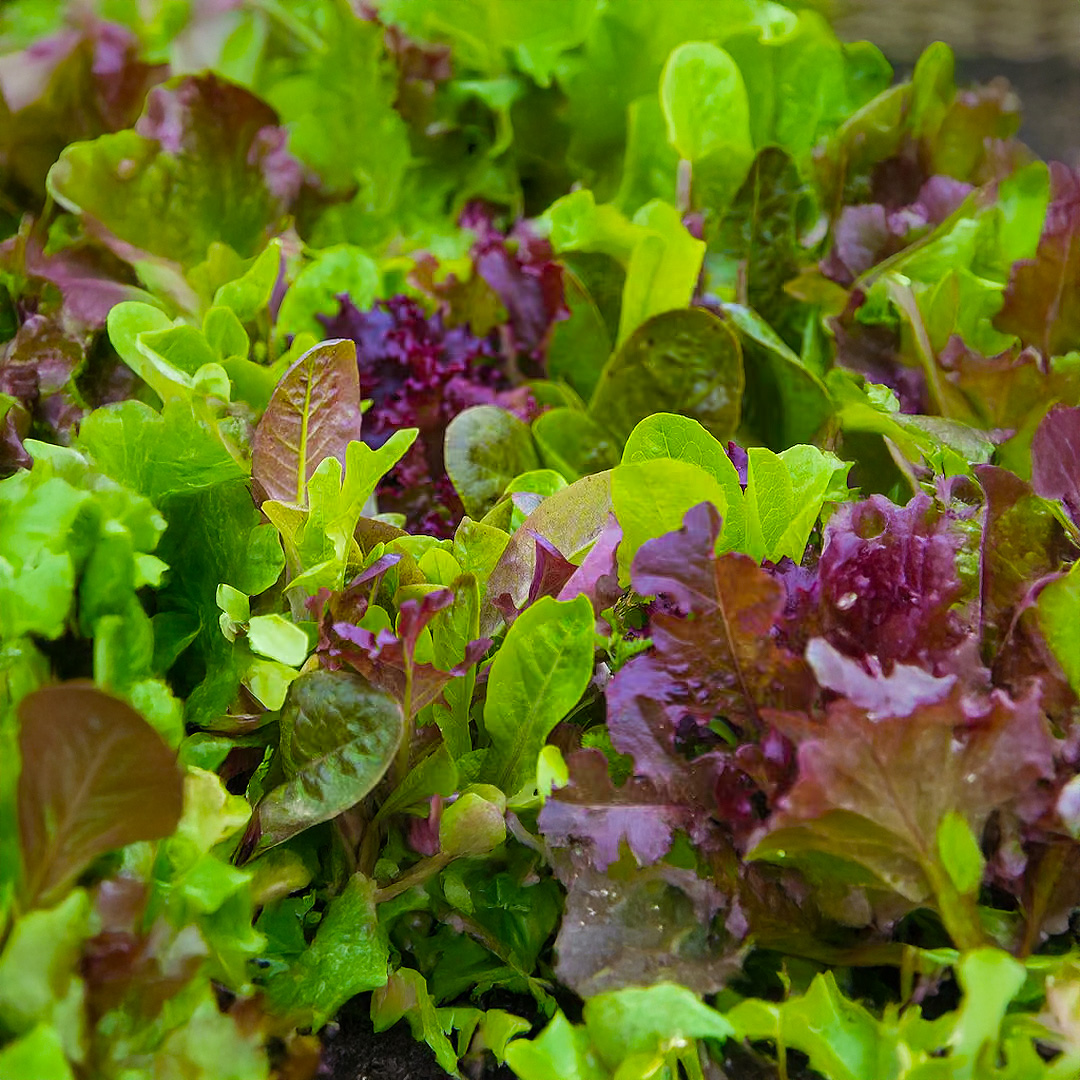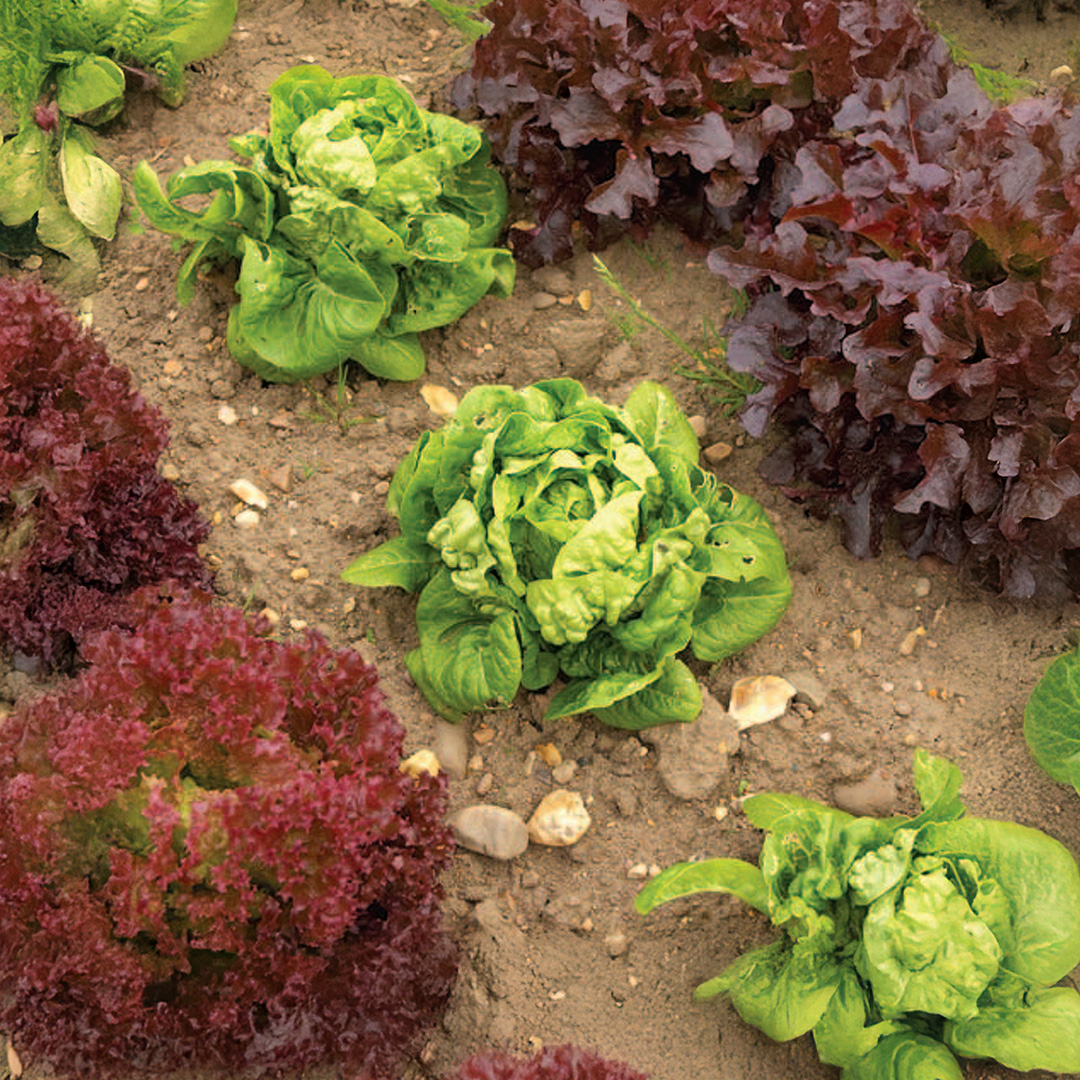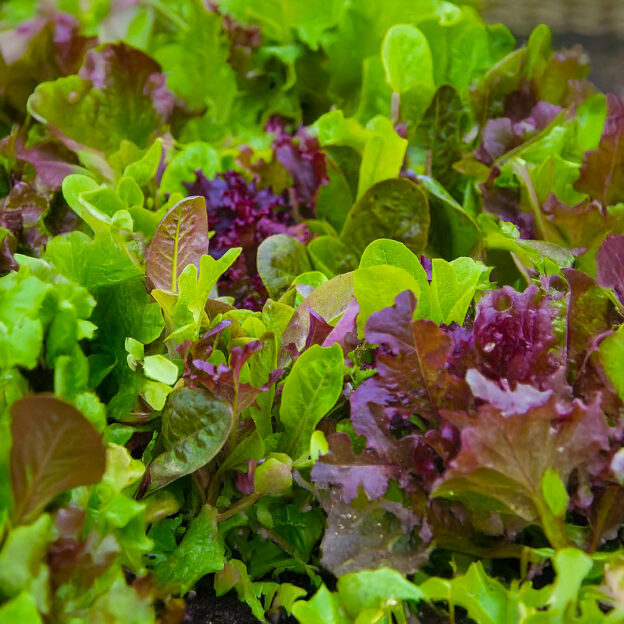There’s nothing like a garden fresh, crisp salad, and these days, many people are adding varied greens to their salads besides familiar lettuce varieties and common spinach. Try growing a few of these less familiar greens for your own salads or for sale at your farmer’s market. Greens can grow in cooler or warmer weather for year-round freshness and healthy eating.
Cool Weather Greens
- Mache (Valerianella locusta) – Also known as corn salad or lamb’s lettuce, mache is a popular French green. It is very cold tolerant if grown under covers, and will seed itself once temperatures rise above 80 degrees. Maturing in about 50-60 days, the small, dark green leaves are sweet and juicy. Mache attracts snails and slugs, so you may want to grow it in raised beds or put out bait to distract critters.
- Claytonia (Claytonia perfoliata) – Very high in vitamin C, claytonia, also known as miner’s lettuce, was eaten by miners in the California gold rush to keep from getting scurvy. Claytonia is also very cold tolerant, and will grow under covers even in winter. It takes about 40 days to be ready to harvest, and can be eaten even after in flower, though it is better when the flower stalks are still short.
- Mibuna and Mizuna – These two closely related Asian greens grow quickly and tall in cooler, moist weather. Mibuna has a mustard-like flavor, while Mizuna is more peppery. Both are good raw in salads or as part of a stir-fry dish. Both are good for “cut-and-come-again” harvesting, though on smaller plants the stress may cause them to go to seed prematurely.
Warm Weather Greens
- Orach – This colorful, vitamin rich plant is often considered a warm season alternative to spinach. It can grow in either cool or warm weather, as it does not get as bitter as spinach after flowering. This hardy plant can tolerate mild frost, as well as salty areas, and can grow anywhere from 4-6 feet tall.
- Purslane – Though commonly considered a weed, this green is very nutritious, with high amounts of Omega-3 fatty acids, vitamin E and beta carotene. Its tangy flavor and crisp texture make it a great addition to salads, and its oily content benefits homemade pesto or other sauces and dips. Purslane spreads out to about 18 inches, and will not tolerate frosts.
- Malabar Spinach – This vining green loves the heat. Long past when other greens have wilted or gone to seed, malabar is still crisp and tasty. The leaves also hold up better in soup and stir fry than most greens. The raw leaves taste like peppery citrus, but when cooked it is much closer to the taste of spinach.
Trying new greens can be an interesting experiment in the garden or greenhouse, and they can add rich variety, texture and tastes to your salads and other recipes. Try some of these less familiar greens and you’ll fall in love with salads all over again.









